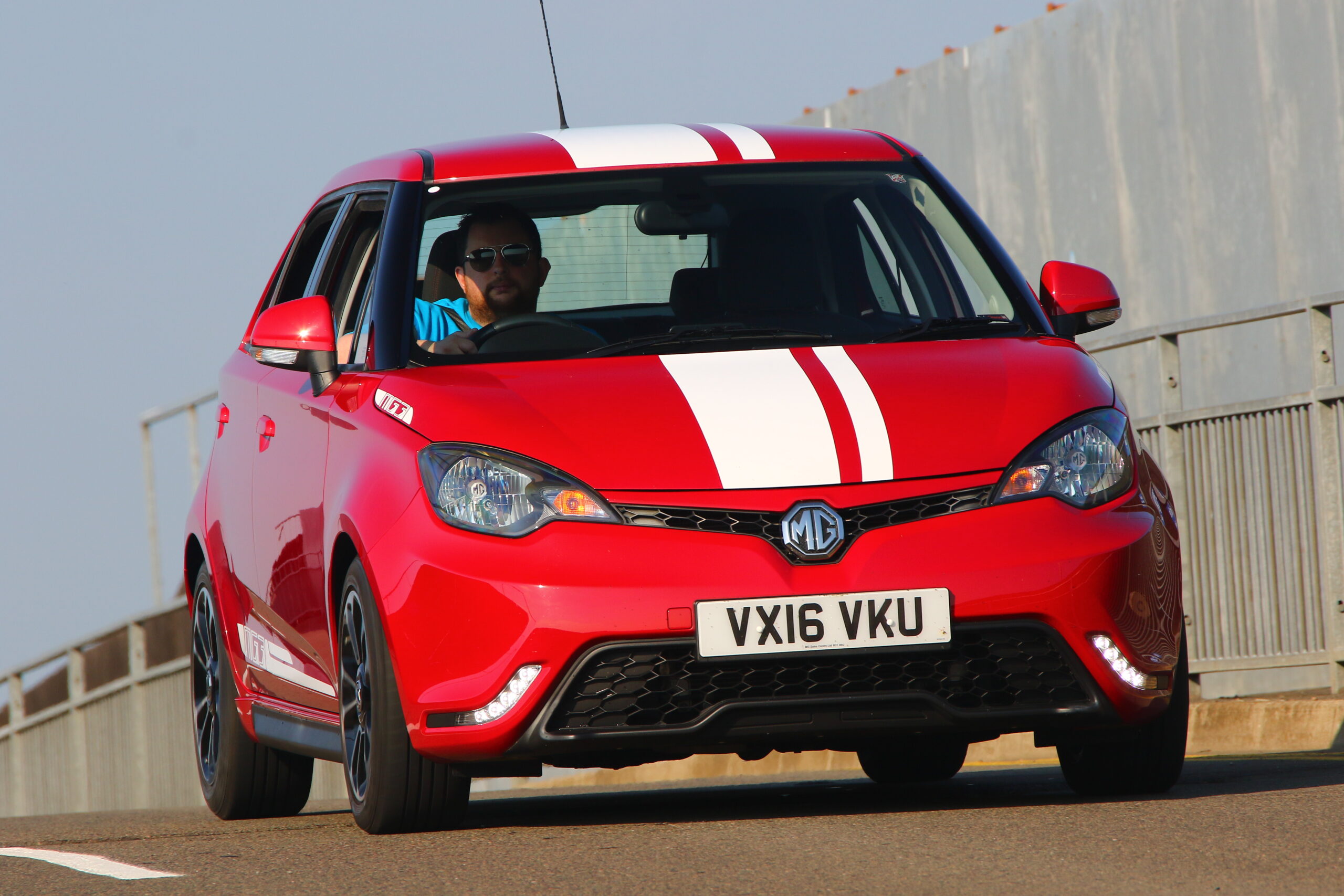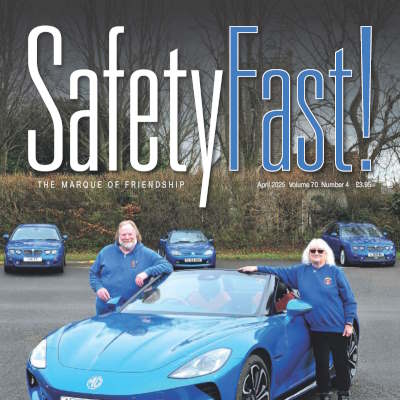So You Want to Buy an SVW?
Reproduction in whole or in part of any article published on this website is prohibited without written permission of The MG Car Club.
By Gary Perry
“SVW” is shorthand for a range of three models produced by MG in the years 1936 to 1939. The SA was produced from 1936, the VA from 1937 and the WA from 1938. All three models ceased production when war broke out in September 1939.
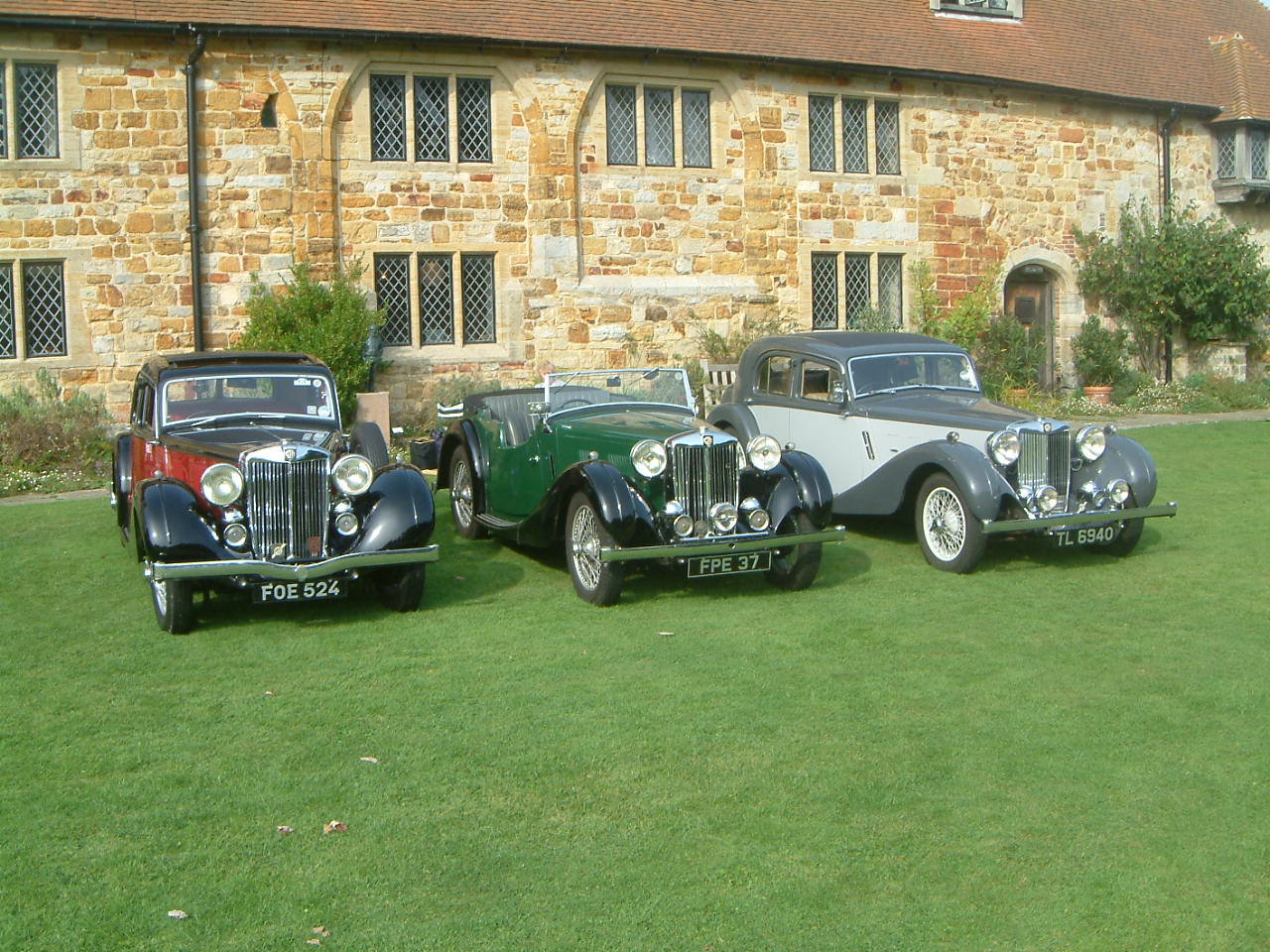
Left to right WA Saloon Jeff Gibson/VA Tourer Keith Bush/SA Saloon Gary Perry. Taken at South East Centre event 2006.
Each model had offered three body styles – the Saloon, Tourer, and Tickford Drop Head Coupe. The range was not revived after the war and the Y type was introduced as the appropriate successor.
The SVW range and the TA was the first to be produced by MG after MG Cars were incorporated into the Nuffield Group in 1935. Rationalisation and cost control were the order of the day, and MG had to stop the development of out and out racers such as the R Type. They also lost their design and drawing office, which was transferred to Cowley. The S type, which was under development with independent front suspension and a ladder chassis, was abandoned. Instead, MG had to modify and use existing Nuffield parts in the SVW range. This was a step backwards to the origins of MG cars.
At the time the cars were known by their engine size, and were called the “2 litre”, the “1½ litre” and the “2.6 litre” in the advertising and sales literature.
In total 5516 SVW cars were produced: 2739 SAs, 2407 VAs and only 370 WAs. Of these, we know of 593 still in existence: 246 SAs, 303 VAs and 44 WAs.
The rarest of all is the WA tourer. Nine were made in total of which 8 were supplied to the Glasgow Police. One of these police cars is the only known survivor.
History and Specification Changes
Prior to the incorporation into the Nuffield Group, Cecil Kimber, General Manager of MG in 1935, did at least have the freedom to have a design commissioned for a new 6-cylinder saloon. The design was penned by Mulliner and was a classic late 1930’s shape with sweeping curves and a long bonnet. Although many contemporary cars such as Bentley and Jaguar had similar design features, the MG version was particularly attractive.
Into the Mulliner design went a Nuffield cast iron conventional overhead valve push rod engine shared with the Wolseley 18/80. This engine was developed from a side-valve engine with origins going back to the Bullnose Morris of the 1920’s. Wolseley cars used twin SU carburettors like MG, but MG re-engineered the cylinder head and improved the breathing, getting a few more bhp, but still staying within the RAC horsepower rating of 16 hp. This rating was based on capacity of the engine rather than power output. As initially shown at the 1935 Motor Show, the new MG 2 Litre was well received, but despite many advance orders, it took over 6 months to reach the showrooms.
For production cars the engine was bored out from the original 2062cc Motor Show car to 2288cc for the first year of production. After that the capacity was again increased to 2322cc – exactly 18 hp.
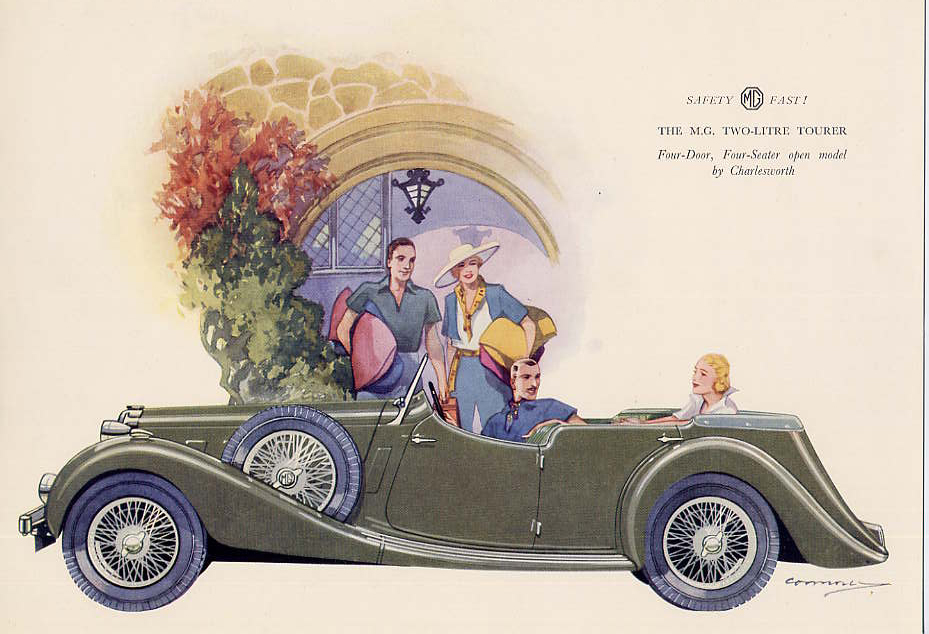
SA Charlesworth Tourer type 3
The SA was heavy and long, racy enough to justify the MG badge, but in truth not a notably advanced or powerful car. Its main appeal was its elegant looks and sumptuous interior. It featured a dramatic fascia with gold dials, door and dash panels with inlaid wood, leather upholstery, silk cushions for the rear passengers, opening quarter lights and a rear blind that could be operated from the drivers seat. Despite the high specification, it was modestly priced at £375.
Development of the models
Early in the production life of the SA, development started on a smaller four cylinder variant, which was to become the VA, or 1 ½ litre. Announced in 1936, the engineering of the two cars was very similar with a major difference being synchromesh on 2nd, 3rd and 4th gears instead of only on 3rd and 4th on the SA. During 1937 the clutch was changed to a dry one although the SA retained a wet clutch until its demise in 1939.
The VA was a sprightly car, with a better power to weight ratio than the SA. The shorter body provided as much accommodation as the SA, although it did not have the stately impressiveness of that car.
The SVW range was a favourite of many police forces at the time. In particular the Tourer body offered a fast car, whilst with the hood down it gave the Police officer’s high visibility to the public. The VA Tourer was particularly popular with the upgraded VA engine using the larger WA pistons. Due to its construction the VA Tourer was also the lightest car and therefore had the best acceleration. MG produced a confidential catalogue for the police forces to pick their own upgrades.
The 1548 cc VA engine was also used in the modified T Type racing cars called “Cream Crackers”, but was found to be uncompetitive until it was bored out to take the pistons as in the police specification engines. This gave 1706cc and proved successful in competitions before the war.
Probably in an attempt to keep up with the competition, the SA chassis was reworked in 1938 to become the WA. This car was introduced the same year with production starting in December. Still a 6-cylinder car, the WA had an even longer bonnet on the same chassis that had been widened 3 inches at the rear. It had a bored out SA engine to 2.6 litre which now gave 20 hp. Amongst the many changes was a dry clutch, counter balanced crankshaft, synchro on 2nd, 3rd and 4th gears and a new instrument panel.
The WA did not replace the SA, but was sold alongside it.
Body Styles
Morris Motors bodied the Saloons and VA Tourer, the open SA & WA Tourers were bodied by Charlesworth and all of the Drop Head Coupes (called a “folding head foursome”) bodied by Salmons and Sons (later renamed as Tickford). It was also possible to buy the SVW range as a chassis only. This led to a number of elegant special bodied cars being created around the world.
There were constant changes to all areas of the car design from layout of the instrument panel to steering and suspension upgrades. The basic Tickford and Saloon bodies were little altered but the SA Tourer had 3 different styles of bodywork in the 3 years of its production.
Bodywork
These are big heavy cars and therefore needed to have a substantial chassis and drive train. This has meant that these parts of the SVW models last really well. Rarely are there problems of rot in the chassis or a mechanical component that cannot be rebuilt.
Now, at least 70 years old, the SVW bodywork often has suffered. The bodies are constructed with an ash timber frame, which can rot. This frame is hidden behind the metal skin and is the strength of the car body. It can often be expensive to repair. In particular the door pillars can lose their strength, as the doors are heavy with both front and rear hanging from the one pillar. For the SA and WA Charlesworth bodies, they fitted a door pillar support onto the chassis. For all cars try holding the end of the doors when open and lift them up and down to see what movement is found in the pillars.

WA Tickford Severin Gallo
The saloons tend to suffer with rot in the upper timbers. This has often started with the water outlets from the sunroof undertray becoming blocked. This affects the windscreen pillars and the rear quarters. As with many MGs, where the wings touch the main body the wing piping traps moisture and dirt. This gives rust in this area for both wing and body tub.
The models fitted with the spare wheel in the front wings often suffer with rust in the bottom of the wheel well as draining is poor in this area. Similar problems occur for the SA saloon spare fitted behind a metal cover on the boot.
The front and rear wings suffer from the usual bends and twists from small impact.
The Tickford bodies were well made with each Tickford part carrying a unique number for each car. Even the pram irons have the numbers stamped in the back with a plaque mounted under the bonnet showing this number. The WA Tickford body was strengthened by an additional steel frame which took away some of the flexing found on the SA. The VA being smaller and more compact does not suffer in the same way.
As with all of the SVW range, the interior trim is sumptuous and therefore expensive to replace. Leather kits and complete seats are available along with a fitting service offered by specialists. The Tickford hood mechanism is simple if somewhat time-consuming to use and expensive to replace. It offers a good level of protection from the elements.
The SA and WA Charlesworth tourers along with the Morris bodied VA Tourer have sidescreens similar to the T Types. This makes keeping out the wind and rain a challenging task and is also expensive to replace.
Mechanical
The engine, gearbox and axles are large and solid. The blocks do not tend to suffer with the cracks in the water jacket that was so common with the MG TA and MMM cars. Nearly all of the SA and early VA engines had cast white metal conrod bearings. Thin wall shells were used for later VA’s and all of the WA models. Unfortunately these shell bearings are no longer available so owners have experimented with similar sized bearings from other manufacturers. Recently an engineering company has been re-metalling these bearings to the required size. This is cheaper than replacing with the earlier poured white metal types. The main crank bearings have the same problem. Remanufactured pistons, camshafts, rocker shafts and timing gears are available as are the gaskets and other consumables required to undertake an engine restoration. The WA was fitted with an automatic timing chain tensioner and an oil cooler as standard. All of the cylinder heads can be converted to run on unleaded petrol.
The engine for the SA and WA will happily sit all day at 70 mph whilst the VA prefers the 60-65 mph region. The oil pressure should be 30-40 psi when hot and running at 40 mph. The engines are typical MGs with a slight tappet noise. If the tappets are silent then it is likely that they have been over adjusted. Correct adjustment is straight forward but unless set correctly will soon cause problems. The oil flow to the rocker shaft can be considerable – leaving those import crank journals with scant lubrication. It is common practice to fit a restrictor to the cylinder head so as to allow more flow to the bottom end. Engines should run smoothly and rev freely – particularly if the engine has been correctly balanced during the rebuild. Camshafts do wear like most MGs. Also the cam followers live a hard life.
Carburettors are of the standard SU design although the SA has side draught carbs. Some vaporisation may occur but this does not affect all cars.
Water pumps are a bit of a problem with the original style carbon seal often leaking. Sealed for life bearings and modern lip seals solve this. Keeping a spare rebuilt water pump in the car is a good idea. Many owners now fit an electric fan to the back of the radiator. This is easy to fit and stops overheating when on the M25 car park!
The gearbox is a good solid item and often only requires new bearings. Some of our Australian owners have had problems with 3rd gears breaking on the SA but this is not common elsewhere. The SA and early VA had a cork clutch running in oil as in the TA. When adjusted correctly this gives a good gear change and lasts many thousands of miles. Make sure that there is some movement of the clutch pedal before the clutch starts to disengage. The later VAs and all the WAs were fitted with a dry clutch.
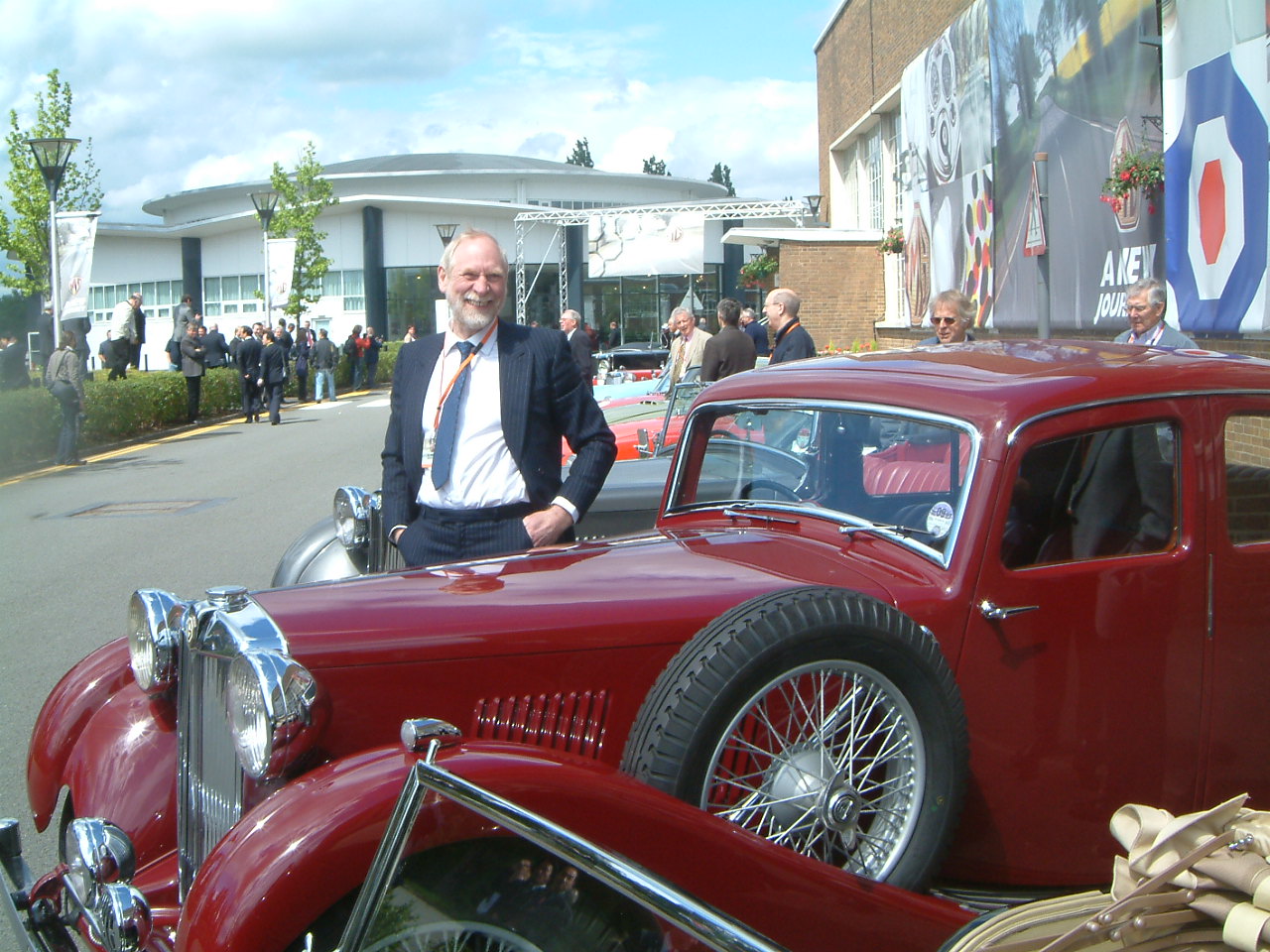
VA Saloon Peter Ratcliffe at the NAC MG TF launch, Longbridge
Axles are well made and strong with new half shafts, bearings and hubs available off the shelf. The recent introduction of new higher ratio crown wheel and pinions has made for a 500rpm drop in engine speed when on the motorway.
All of the models were fitted with hydraulic Lockheed brakes as standard giving excellent stopping ability for the period. The WA even had a tandem master cylinder! New rubber kits and re-sleeved cylinders bring these heavy cars to a quick stop.
The Jackall hydraulic jacking system is operated from inside the car and allows for selection of Front, Rear or All jacks. The latter option obviously lifts the whole car from the ground. The rams themselves are prone to rusting and some owners have had problems getting the rams back into the jack after use. Also the system is likely to leak. New seals and stainless steel rams are now available.
These are heavy cars and so the leaf springs need to be in good condition. If the car hits the ground or is sitting down over the back wheels then the springs need to be reset by a good specialist forge. The round Luvax vane type shock absorbers are ok on the SA and VA when properly maintained. The VA even had the option of adjustable shocks. The WA and later SAs were fitted with the more modern piston type, similar to those on the later T types, however considerably larger.
On the road
These cars are slow away from the lights but will soon get going and keep up with modern day traffic. There is some slight mechanical noise from the speedo and rev counter, however given frequent lubrication of the cables and dials the noise should not be intrusive.
As mentioned above the SA and WA will cruise easily on the Motorways at 70 mph plus whilst the VA prefers 60-65 mph. So they are today just as useable a car as when new.
Listen out for clonks from the front and rear wheels when starting off or when going in reverse. This can be a sign of worn hubs or half shafts. Braking should be straight and even. The ride is extremely comfortable with minimal wind noise. Four adults can easily be carried. The visibility from the font seats is good and impressive down the bonnet and over the chrome headlights, however the rear view is not great. This is a particular problem with the convertible cars with their ‘letter box’ rear window. With the hood down rear seat passengers enjoy splendid views but in the hood up position there is very limited side vision
The SA engine was notorious for running hot and cooking its occupants. The 4 backward opening ventilation doors on the early SA bonnets were replaced with 2 forward opening in early 1937. This still did not solve the problem so a louvered bonnet was fitted along with an additional air vent on the scuttle and side air vents to the front foot wells. When the VA and WA were introduced, they were fitted with a firewall as had been used in early MGs. This seems to have solved the problem.
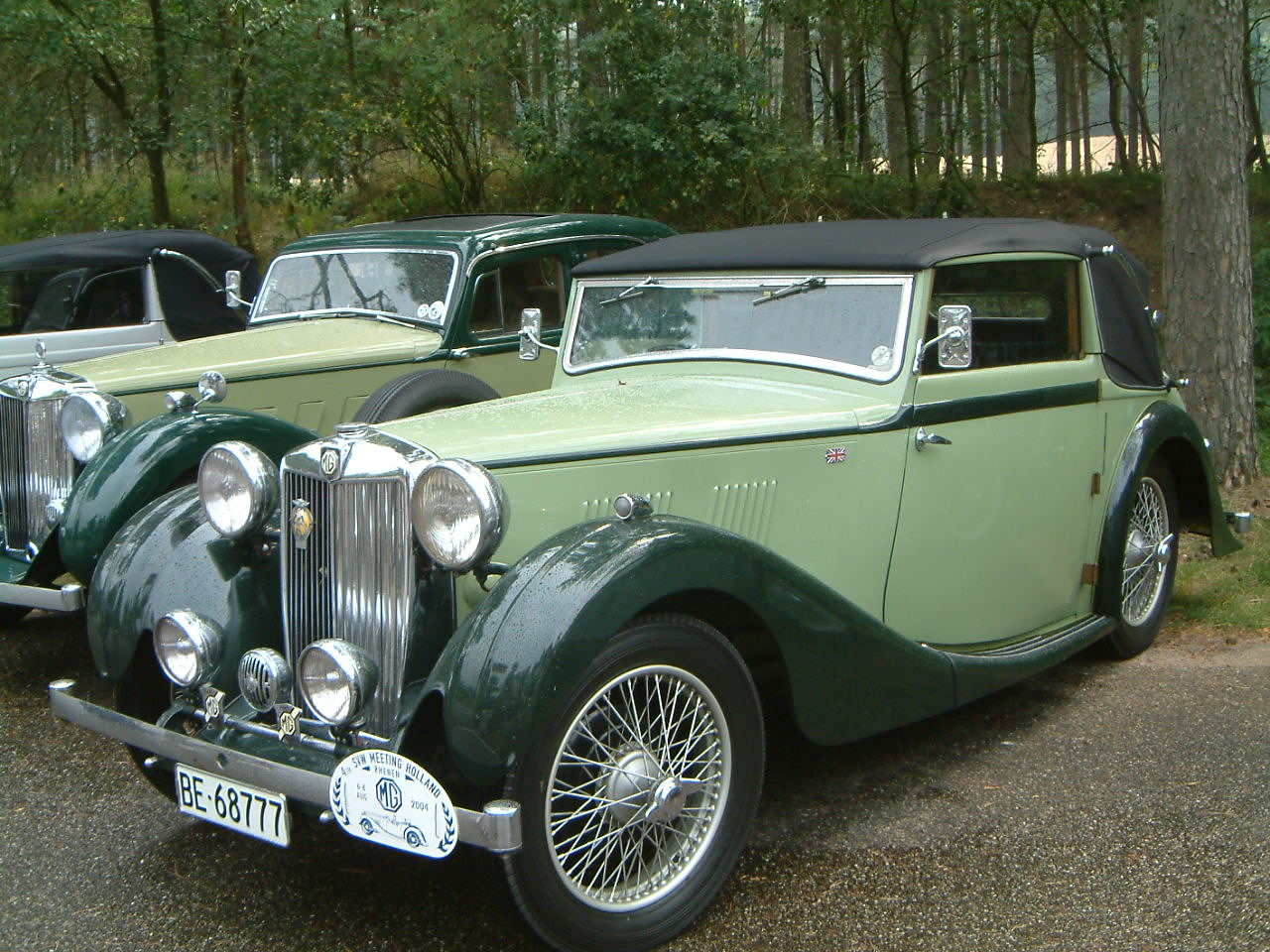
VA Tickford of Ruedi Spycher
Steering on the SA is heavy, particularly during slow manoeuvring, with the VA and WA being lighter. The large standard steering wheel compensates for this. However the cars need plenty of space to manoeuvre – the 3 point turns often become a 5 point! A correctly adjusted peg and worm steering box gives good handling on the move. Steering boxes can be easily rebuilt and new track rod ends are available. Removing the steering drop arm can be quite a task.
Expect around 20 mpg on the road from the SA and WA and around 25mpg from the VA. An unrestored engine will burn some oil and various oils will drip from around the car. The cars are all fitted with an oil level gauge that switches to show fuel level so make sure they both work. The clock on the SA and VA is a wind up 8 day movement. The WA had an electric clock, which was very modern for the period. Both are often inoperable but can be repaired, as can the rest of the instruments. The SA and VA have a small petrol tank of only 12 gallons so require frequent stops at the petrol pump. The 18 gallons of the WA is much more practical.
Since new, SVW cars have been used for rallying. They appeared in the RAC Rallies and in 1937 entered in Italy the Mille Miglia. More recent events have seen the WA Tickford of Terry Maunder in the 2002 Maastricht to Monte Carlo Winter Trial, and Harry and Cathy Hickling in an SA Keller Replica successfully completing the gruelling Peking to Paris Rally in 2007.
What to pay
SVW cars can be quite expensive for good restored examples with the open cars having a small premium over the closed cars. The rarest are the SA Charlesworth and any of the WAs. Expect to pay over £40,000 for a good example of these models with similar prices for restored SA Saloons and Tickfords. The VA is the cheaper car and prices are from £18,000 for a solid running saloon to around £30,000 for a restored version. Concours WA Tickfords have sold for over £60,000.
There are some cars that have had the original style of body changed. Usually the Saloon body has been replaced with a Tickford or Tourer body so it is always worth checking with the SVW Register first before purchasing. It is fortunate that the MGCC hold the original MG factory production records for all of the SVW cars.
Please visit our website www.svwregister.co.uk for more detailed information of the three models or email info@svwregister.co.uk with any questions. SVW cars for sale and regalia will also be found on our website.

 MG Car Club
MG Car Club